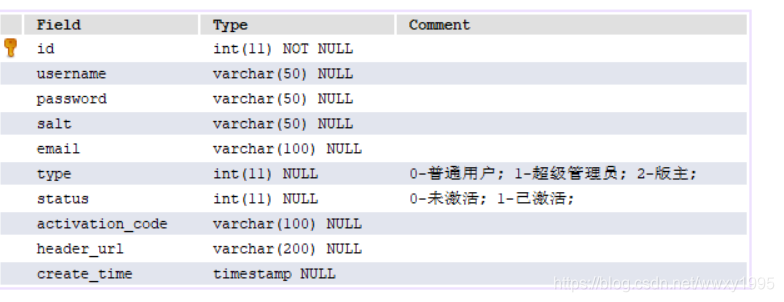社区项目开发数据库准备工作
本文共 253 字,大约阅读时间需要 1 分钟。
首先需要创建一个数据库,并建表导入数据,为后续操作做准备,这一步通常比较繁琐,但在实际项目开发中,除了DBA外,一般很少由开发人员建表
下面是简单的SQL语句
SHOW DATABASES;CREATE DATABASE community;SHOW DATABASES;USE community;SHOW TABLES;
表的创建和数据的导入,使用了外面的两个SQL脚本
数据库由以下几张表构成

其中user用户表的信息如下

消息表如下

下一步,配置MyBatts,完成利用Java代码高效的操作数据库
转载地址:http://bfmv.baihongyu.com/
你可能感兴趣的文章
nginx配置一、二级域名、多域名对应(api接口、前端网站、后台管理网站)
查看>>
nginx配置中的服务器名称
查看>>
Nginx配置代理解决本地html进行ajax请求接口跨域问题
查看>>
nginx配置全解
查看>>
Nginx配置参数中文说明
查看>>
Nginx配置后台网关映射路径
查看>>
nginx配置域名和ip同时访问、开放多端口
查看>>
Nginx配置多个不同端口服务共用80端口
查看>>
Nginx配置好ssl,但$_SERVER[‘HTTPS‘]取不到值
查看>>
Nginx配置如何一键生成
查看>>
Nginx配置实例-动静分离实例:搭建静态资源服务器
查看>>
Nginx配置实例-反向代理实例:根据访问的路径跳转到不同端口的服务中
查看>>
Nginx配置实例-反向代理实现浏览器请求Nginx跳转到服务器某页面
查看>>
Nginx配置实例-负载均衡实例:平均访问多台服务器
查看>>
Nginx配置文件nginx.conf中文详解(总结)
查看>>
nginx配置文件nginx.conf超详细讲解
查看>>
Nginx配置自带的stub状态实现活动监控指标
查看>>
Nginx配置详解
查看>>
nginx配置详解
查看>>
nginx配置详解、端口重定向和504
查看>>